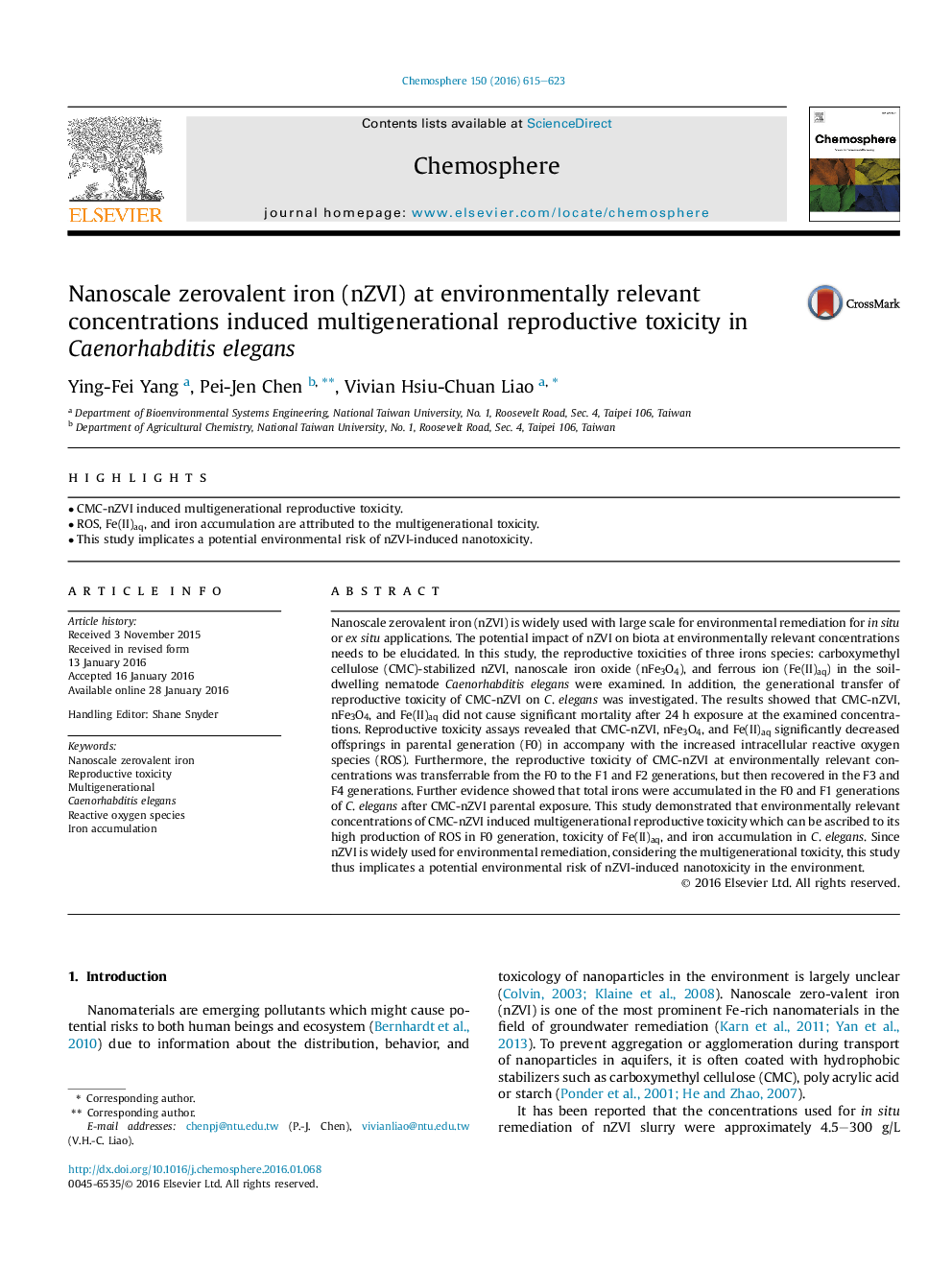| Article ID | Journal | Published Year | Pages | File Type |
|---|---|---|---|---|
| 6306854 | Chemosphere | 2016 | 9 Pages |
Abstract
Nanoscale zerovalent iron (nZVI) is widely used with large scale for environmental remediation for in situ or ex situ applications. The potential impact of nZVI on biota at environmentally relevant concentrations needs to be elucidated. In this study, the reproductive toxicities of three irons species: carboxymethyl cellulose (CMC)-stabilized nZVI, nanoscale iron oxide (nFe3O4), and ferrous ion (Fe(II)aq) in the soil-dwelling nematode Caenorhabditis elegans were examined. In addition, the generational transfer of reproductive toxicity of CMC-nZVI on C. elegans was investigated. The results showed that CMC-nZVI, nFe3O4, and Fe(II)aq did not cause significant mortality after 24Â h exposure at the examined concentrations. Reproductive toxicity assays revealed that CMC-nZVI, nFe3O4, and Fe(II)aq significantly decreased offsprings in parental generation (F0) in accompany with the increased intracellular reactive oxygen species (ROS). Furthermore, the reproductive toxicity of CMC-nZVI at environmentally relevant concentrations was transferrable from the F0 to the F1 and F2 generations, but then recovered in the F3 and F4 generations. Further evidence showed that total irons were accumulated in the F0 and F1 generations of C. elegans after CMC-nZVI parental exposure. This study demonstrated that environmentally relevant concentrations of CMC-nZVI induced multigenerational reproductive toxicity which can be ascribed to its high production of ROS in F0 generation, toxicity of Fe(II)aq, and iron accumulation in C. elegans. Since nZVI is widely used for environmental remediation, considering the multigenerational toxicity, this study thus implicates a potential environmental risk of nZVI-induced nanotoxicity in the environment.
Keywords
Related Topics
Life Sciences
Environmental Science
Environmental Chemistry
Authors
Ying-Fei Yang, Pei-Jen Chen, Vivian Hsiu-Chuan Liao,
